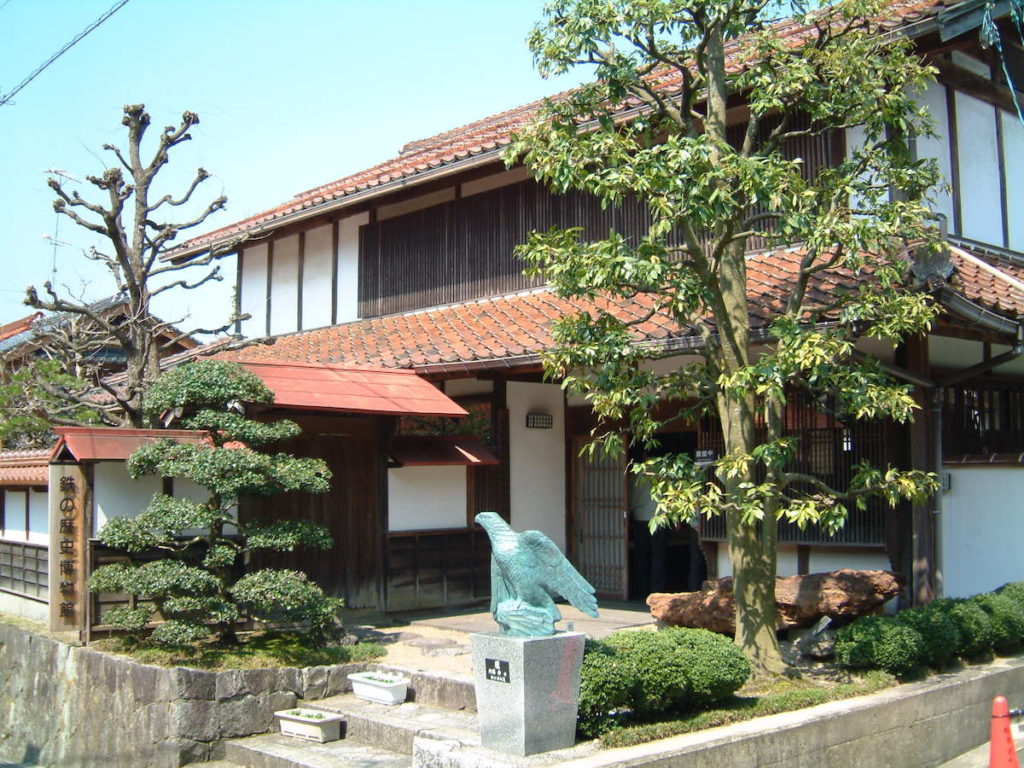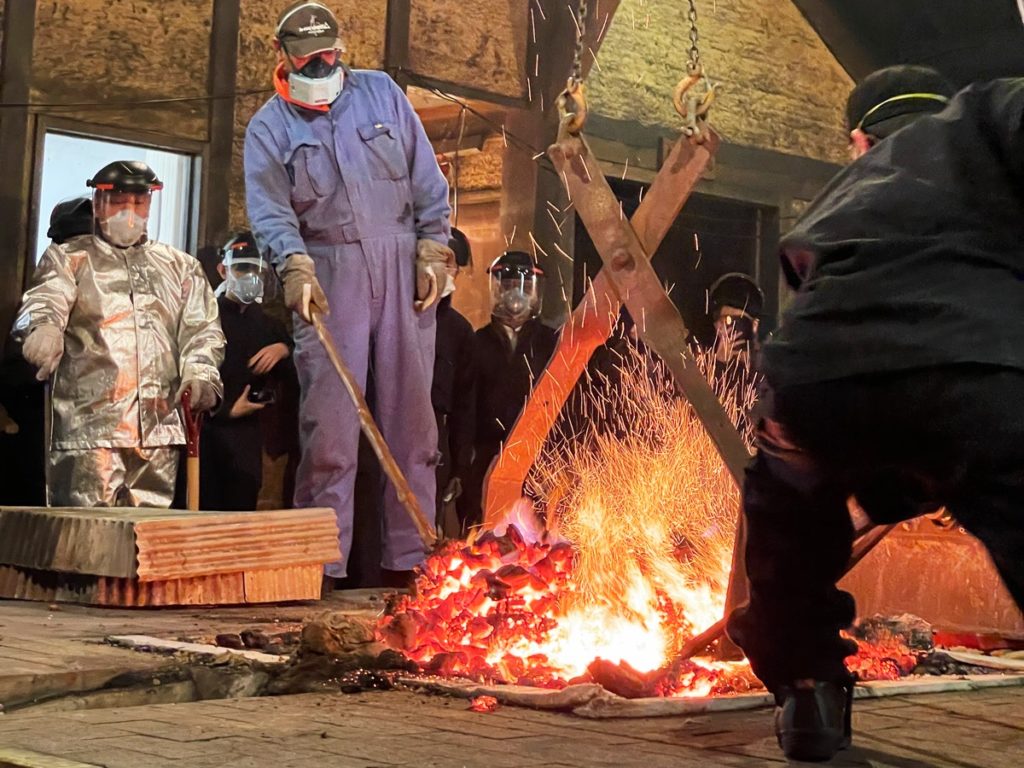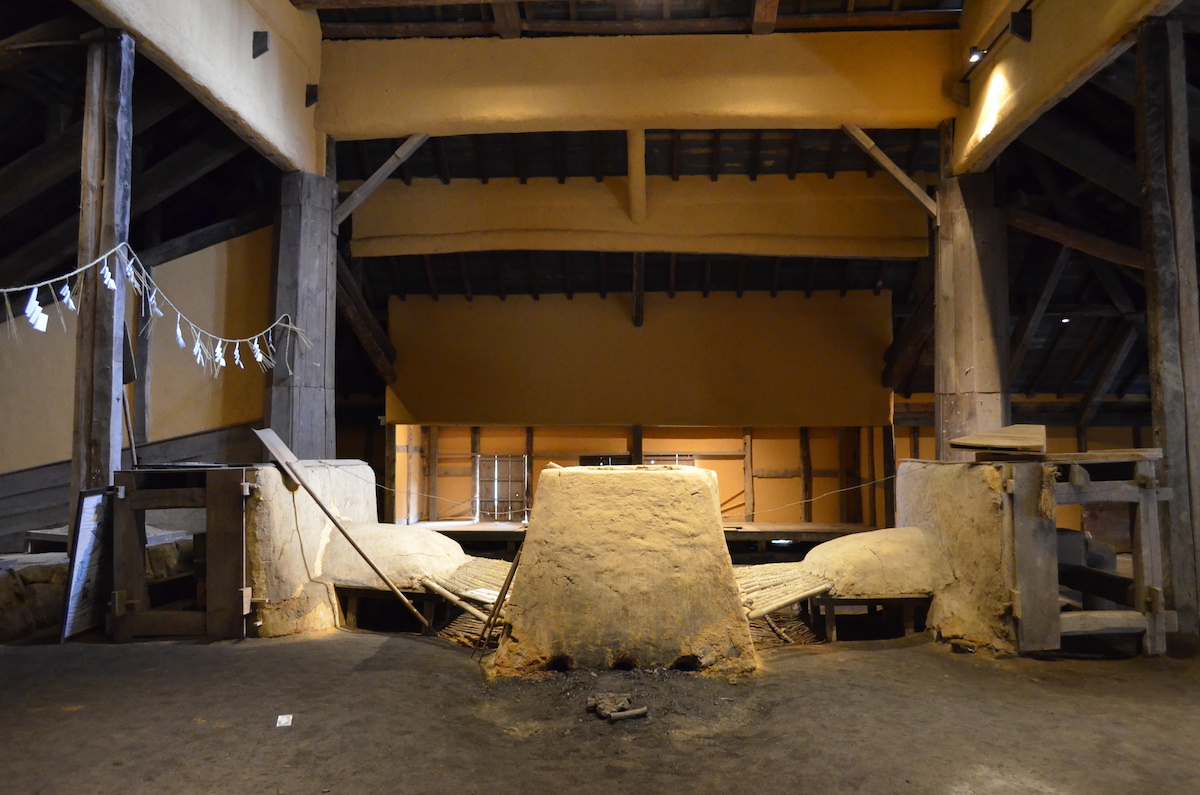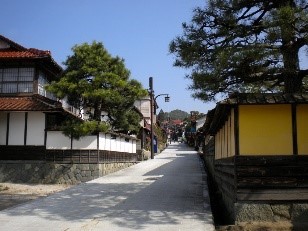The Holy Ground of TATARA Ironmaking
Sugaya Tatara Sannai Ironmaking Village
Sannai is an ironmaking village with a complex of ironmaking facilities and residential buildings for employees. The features of this characteristic conglomerate settlement still remain in Sugaya Tatara Sannai in Yoshida Town, Unnan City, that resulted in the village being designated as an Important Tangible Folk Cultural Property in 1967. Sugaya Tatara operated for 130 years until 1921, and was the frontline of ironmaking for the Tanabe family. Furthermore, the remains of iron-sand screening sites, accompanied by sluices and watercourses, also remain close to the settlement, allowing one to visit and observe the entire process of the industrial heritage that dates back to the early modern period.
The architectural heritages of Sugaya Tatara Sannai
Takadono
The workshop building where a furnace is equipped is called Takadono. It is square in shape, measuring 18 m × 18 m, and has the furnace installed in its middle. Bellows are present on each side of the furnace, with storage spaces called Kogane-machi for iron-sand and Sumi-machi for charcoal. In addition, Muraghe’s break space, called Muraghe-za, is found inside the building. This is a significant, symbolic piece of architecture in the Tatara culture. It is now the only surviving Takadono in Japan that remains in the original state.


Komegura
Photograph of Komegura

Nagaya
‘Princess Mononoke,’ ‘Demon Slayer: Kimetsu no Yaiba’ and Sugaya Tatara Sannai
Sugaya Tatara Sannai is known as a model for an ironmaking village that is illustrated as a key factor to the story in a Japanese-animated epic fantasy film ‘Princess Mononoke’ written and directed by MIYAZAKI Hayao, animated by Studio Ghibli.
On the other hand, principal workers, such as swordsmiths, charcoal makers, and Tamahagane, which are all significant to Tatara ironworks, are illustrated in the Japanese-animated epic fantasy film ‘Demon Slayer: Kimetsu no Yaiba’ by GOTOUGE Koyoharu.
If you have a chance to watch these films, your enjoyment of the Sugaya Tatara Sannai site and its surrounding landscape will be further enhanced by recalling the scenes from the movies and animations.

Yoshida Town and the Tanabe Family, the Tesshi
The town of Yoshida in Unnan City is surrounded by mountains. It was developed as the home ground of the Tanabe family, the most powerful business family in the Tatara industry. The business owners in this region’s ironmaking industry were called Tesshi, meaning ‘iron-makers.’ They used to own and run several ironmaking sites around the town. Blacksmith workshops for Oh-kaji were located close to their residential property, which allowed them to practice integrated business operations. Tanabe family had long been appointed as a chief Tesshi by Matsue Domain during the Edo period that allowed them to receive recognition as one of the top Tatara entrepreneurs. With the advent of the Meiji period, more productive western-style ironmaking methods and the importation of cheaper raw iron had begun. Thus, the Tatara industry gradually declined and their Tatara business was finally closed in 1923.

Storages of Tanabe Family

The Historical Museum of Iron
The Undying Flame of TATARA- Modern TATARA Operation
The method of Tatara has now been restored with the aid of contemporary technology. The modern Tatara is operated several times a year at an interactive workshop, Unnan Wakou Production and Exploring Tatara Experience in Yoshida Town, which aims at passing down the expertise to the future generations.

Innovations in New Wakou Iron Products
Tanabe Corporation, run by the current head of the Tanabe family (TANABE Chouemon XXV), aims to create new iron products designed with a touch of innovations from Wakou, meaning Japanese iron, that is produced by the modern Tatara practice. The products include Japanese style kitchen knives, knives, iron teapots, and more. These items can be purchased at their shop Tessen-do.

Experiences


Sight Seeing in Yoshida Town
Yoshida Town has three characteristic zones (about a 3 hour excursion);
- Honmachi St. zone features historical buildings such as the Tanabe family’s storage buildings and the Historical Museum of Iron.
- Sugaya Tatara Sannai and its surrounding landscape
- Open-air museum zone where Unnan Wakou Production and Exploring Tatara Experience and blacksmith workshop are located






